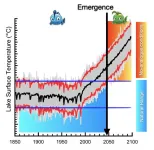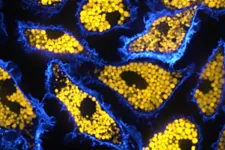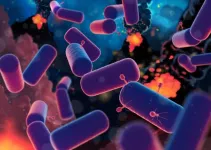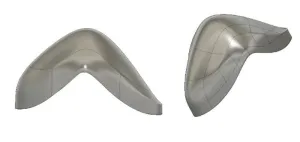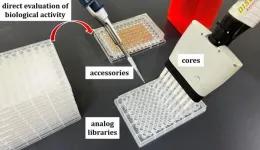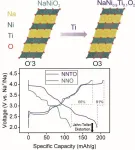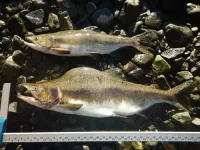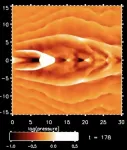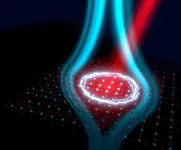(Press-News.org) While the COVID-19 vaccines introduced many people to RNA-based medicines, RNA oligonucleotides have already been on the market for years to treat diseases like Duchenne Muscular Dystrophy and amyloidosis. RNA therapies offer many advantages over traditional small molecule drugs, including their ability to address almost any genetic component within cells and to guide gene editing tools like CRISPR to their targets.
However, the promise of RNA is currently limited by the fact that rapidly growing global demand is outpacing the industry’s ability to manufacture it. The standard method of chemically synthesizing RNA was invented in the 1980s, and requires specialized equipment and labor-intensive processes. Chemical synthesis methods are also limited in terms of the range of nucleotide building blocks that they can incorporate into RNA molecules, and they produce metric tons of toxic chemical byproducts that create environmental hazards and limit factories’ production capacity. These problems will only increase as RNA production ramps up in response to demand.
A team of scientists at the Wyss Institute at Harvard University and Harvard Medical School (HMS) has created a solution to this problem: a new RNA synthesis process that expands the RNA therapeutic design space and unlocks the potential for rapid scale-up that chemical synthesis cannot achieve Their novel method can produce RNA with efficiencies and purities comparable to current industry standards using water and enzymes rather than the toxic solvents and explosive catalysts that plague current manufacturing. It can also incorporate all the common molecular modifications that are found in RNA drugs today, and has the potential to incorporate novel RNA chemistries for new types of therapies. The achievement is described in a paper published today in Nature Biotechnology.
“As demand for RNA drugs continues to grow and additional products come to market, we will exceed the current global supply of acetonitrile, the organic solvent used in chemical RNA synthesis methods,” said co-first author Jonathan Rittichier, Ph.D., a former Postdoctoral Fellow at the Wyss and HMS. He and fellow first author and former Wyss Research Scientist Daniel Wiegand, M.S.Ch.E., Wyss Core Faculty member George Church, Ph.D., and others co-founded EnPlusOne Biosciences to commercialize their technology. “Delivering RNA drugs to the world at these scales requires a paradigm shift to a renewable, aqueous synthesis, and we believe our proprietary enzymatic technology will enable that shift.”
A better, bio-friendly way
In Church’s lab, Rittichier, Wiegand and co-corresponding author Erkin Kuru, Ph.D. recognized that the pharmaceutical industry was in the midst of an RNA revolution. The lab had previously devised a way to synthesize DNA using enzymes, and hypothesized they could do the same for RNA.
The scientists started with an enzyme from a strain of yeast, Schizosaccharomyces pombe, which is known to link nucleotide molecules together to form strands of RNA. They engineered the enzyme to make it more efficient and capable of incorporating non-standard nucleotides into RNA. This was especially important in building a useful drug development platform, as every FDA-approved RNA drug contains nucleotides that have been modified from their original form to increase their stability in the body or endow them with new functions.
They then focused on the nucleotides themselves. In standard chemical RNA synthesis,
nucleotides have “protecting groups” added to them: a sort of chemical bubble-wrap that prevents the molecule from being damaged by the harsh reaction conditions. These protecting groups need to be removed after synthesis in order for the RNA to function, and this process requires an additional round of chemical reactions that can damage the RNA as it’s being built. The milder conditions of EnPlusOne’s synthesis eliminate the need for any bulky bubble-wrap, ultimately leading to better manufacturing.
But even as it solved one problem, the team’s enzyme introduced a different one: its natural activity would string together nucleotides uncontrollably, resulting in inaccurate RNA sequences. To solve this issue, they modified their nucleotides with a “blocker,” a chemical group that stalls the enzyme and only allows for the addition of one nucleotide at a time. Once the desired nucleotide has been added, the blocker is removed to allow the next nucleotide in the sequence to bind, resulting in a two-step process that is simpler and less reagent-intensive than the typical four-step chemical synthesis method.
The researchers demonstrated that their new process incorporated nucleotides with 95% efficiency, which is comparable to chemical synthesis. The team then iteratively repeated cycles of enzymatic RNA synthesis to build molecules of 10 nucleotides in length. They are now routinely able to build molecules that are 23 nucleotides long, which is the size of many blockbuster RNA therapeutics.
From molecules to medicines
The key to turning RNA into useful drugs is modifying its naturally existing nucleotides. The team also demonstrated that their enzymatic synthesis method could successfully produce strands of RNA with multiple types of modified nucleotides with the same ability as natural nucleotides. “Natural RNA is made of four letters - A, U, C, and G - but we can expand this simple alphabet with synthetic biology,” said Kuru, who is a Postdoctoral Fellow at HMS. “Our process essentially increases the number of keys we have on our ‘RNA typewriter’ to a much richer alphabet that we can use to write RNAs with new functions and properties.”
This work formed the basis for a Validation Project at the Wyss Institute in 2019 and 2020, when it was de-risked and prepared for commercialization. Also in 2020, the project became the first to be supported through the Wyss Institute’s partnership with Northpond Labs via the Laboratory for Bioengineering Research and Innovation, based upon its potential for significant real-world impact. EnPlusOne Biosciences was launched in 2022 to commercialize the new approach and bring enzymatic RNA synthesis to the world. Funding was led by Northpond Ventures with participation from Breakout Ventures and Coatue.
“Enzymatic nucleotide synthesis technologies offer many advantages as an alternative to chemical-based methods. This platform can help unlock the immense potential of RNA therapeutics in a sustainable way, especially manufacturing high-quality guide RNA molecules for CRISPR/Cas gene editing,” said co-corresponding author Church, who is also the Robert Winthrop Professor of Genetics at HMS.
EnPlusOne is also using its platform to manufacture small interfering RNAs (siRNAs) at lab scale that could be used to treat a wide variety of diseases.
“RNA drugs offer a powerful new treatment approach for a huge range of diseases. However, current manufacturing methods for these drugs are limited in terms of the chemical diversity they can produce, the amount of material that can be produced at a reasonable cost, and their negative impact on the environment due to the harsh chemicals they require. EnPlusOne’s elegant bioinspired enzyme synthesis alternative offers a way to overcome all these limitations, and could help the RNA therapeutics industry to explode,” said Wyss Founding Director Don Ingber, M.D., Ph.D. Ingber is also the Judah Folkman Professor of Vascular Biology at HMS and Boston Children’s Hospital, and the Hansjörg Wyss Professor of Bioinspired Engineering at Harvard’s John A. Paulson School of Engineering and Applied Sciences (SEAS).
Additional authors of the Nature Biotechnology paper include Ella Meyer, Howon Lee, Nicholas J. Conway, Daniel Ahlstedt, Zeynep Yurtsever, and Dominic Rainone. Lee and Ahlstedt are also co-founders of EnPlusOne. This work was supported by the US Department of Energy under Grant DE-FG02-02ER63445 and the Wyss Institute at Harvard University.
END
A better way to make RNA drugs
New enzymatic synthesis method developed at Wyss Institute expands RNA therapeutic capabilities while eliminating toxic byproducts of standard chemical synthesis
2024-07-12
ELSE PRESS RELEASES FROM THIS DATE:
Unprecedented warming threatens earth’s lakes and their ecosystems
2024-07-12
Lakes, with their rich biodiversity and important ecological services, face a concerning trend: rapidly increasing temperatures. A recent study published in Nature Geoscience by an international team of limnologists and climate modelers reveals that if current anthropogenic warming continues until the end of this century, lakes worldwide will likely experience pervasive and unprecedented surface and subsurface warming, far outside the range of what they have encountered before.
The study uses lake temperature ...
Cellular inflammation uncovered in rare neurodegenerative condition
2024-07-12
Researchers at The Hospital for Sick Children (SickKids) have found that inflammation in an immune cell may be responsible in part for some severe symptoms in a group of rare genetic conditions called lysosomal storage diseases (LSDs).
LSDs affect about one in 7,700 live births worldwide. Children with the condition typically present at a young age with progressive neurodegeneration. Many children with LSDs die prematurely, and current treatments focus on symptom management.
Until now, the role of macrophages in the immune system and LSDs was ...
Insight into one of life’s earliest ancestors revealed in new study
2024-07-12
An international team of researchers led by the University of Bristol has shed light on Earth’s earliest ecosystem, showing that within a few hundred million years of planetary formation, life on Earth was already flourishing.
Everything alive today derives from a single common ancestor known affectionately as LUCA (Last Universal Common Ancestor).
LUCA is the hypothesized common ancestor from which all modern cellular life, from single celled organisms like bacteria to the gigantic redwood trees (as well as us humans) descend. LUCA represents the root ...
Real-life ‘stillsuit’: Dune-inspired upgrade for spacesuits allow astronauts to recycle urine into water
2024-07-12
Astronauts on spacewalks famously have to relieve themselves inside their spacesuits. Not only is this uncomfortable for the wearer and unhygienic, it is also wasteful, as – unlike wastewater on board the International Space Station (ISS) – the water in urine from spacewalks is not recycled.
A solution for these challenges would be full-body ‘stillsuits’ like those in the blockbuster Dune franchise, which absorbed and purified water lost through sweating and urination, and recycled it into drinkable water. Now, this sci-fi ...
A comprehensive derivative synthesis method for development of new antimicrobial drugs
2024-07-12
A method to screen a wide variety of drug candidates without laborious purification steps could advance the fight against drug-resistant bacteria.
Efforts to combat the increasing threat of drug-resistant bacteria are being assisted by a new approach for streamlining the search for antimicrobial drug candidates, pioneered by researchers at Hokkaido University, led by Assistant Professor Kazuki Yamamoto and Professor Satoshi Ichikawa of the Faculty of Pharmaceutical Sciences. Their methods, developed together with researchers elsewhere in Japan and in the USA, are discussed ...
Improving cycling performance of sodium-ion batteries through titanium substitution
2024-07-12
Researchers at Karlsruhe Institute of Technology (KIT) have made significant advances in sodium-ion battery (SIB) technology by improving cycling performance of the NaNiO2 cathode. They successfully synthesized, for the first time, the cathode active material NaNi0.9Ti0.1O2, which delivers a specific capacity of 190 mAh/g, thus positioning it as a potential candidate for application in high-energy-density SIBs. This innovative approach not only improves battery stability but also propels us toward advanced energy-storage solutions beyond.
With its high theoretical ...
Hatcheries can boost wild salmon numbers but reduce diversity
2024-07-12
The ability of salmon hatcheries to increase wild salmon abundance may come at the cost of reduced diversity among wild salmon, according to a new University of Alaska Fairbanks–led study.
The number of juvenile salmon released into the North Pacific Ocean by hatcheries increased rapidly in the second half of the last century and remains at over 5 billion each year. Salmon hatcheries have helped push annual pink salmon harvests in Prince William Sound from about 4 million fish prior to hatchery programs to roughly 50 million in recent years.
Using data collected from pink salmon streams ...
Artificial intelligence speeds up heart scans, saving doctors’ time, and could lead to better treatment for heart conditions
2024-07-12
Researchers created a computer model that uses AI to examine heart images from magnetic resonance imaging (MRI)
Results were comparable to those worked out by doctors manually, but instead of taking 45 minutes or more, the AI model takes just a few seconds
The AI model could lead to more efficient diagnoses, better treatment decisions and improved outcomes for patients
Researchers have developed a groundbreaking method for analysing heart MRI scans with the help of artificial ...
How the 'heart and lungs' of a galaxy extend its life
2024-07-12
Galaxies avoid an early death because they have a "heart and lungs" which effectively regulate their "breathing" and prevent them growing out of control, a new study suggests.
If they didn't, the Universe would have aged much faster than it has and all we would see today is huge "zombie" galaxies teeming with dead and dying stars.
That’s according to a new study published in the Monthly Notices of the Royal Astronomical Society, which investigates one of the great mysteries of the Universe – why galaxies are not ...
Light-induced Meissner effect in optically driven YBa2Cu3O6.48
2024-07-12
Superconductivity is a fascinating phenomenon, which allows a material to sustain an electrical current without any loss. This collective quantum behavior of matter only appears in certain conductors at temperatures far below ambient.
A number of modern studies have investigated this behavior in so-called non-equilibrium states, that is in situations in which the material is pushed away from thermal equilibrium. In these conditions, it appears that at least some of the features of superconductivity can be recreated even at ambient temperatures. Such non-equilibrium high temperature superconductivity, shown to exist under irradiation ...
LAST 30 PRESS RELEASES:
Interaction of climate change and human activity and its impact on plant diversity in Qinghai-Tibet plateau
From addressing uncertainty to national strategy: an interpretation of Professor Lim Siong Guan’s views
Clinical trials on AI language model use in digestive healthcare
Scientists improve robotic visual–inertial trajectory localization accuracy using cross-modal interaction and selection techniques
Correlation between cancer cachexia and immune-related adverse events in HCC
Human adipose tissue: a new source for functional organoids
Metro lines double as freight highways during off-peak hours, Beijing study shows
Biomedical functions and applications of nanomaterials in tumor diagnosis and treatment: perspectives from ophthalmic oncology
3D imaging unveils how passivation improves perovskite solar cell performance
Enriching framework Al sites in 8-membered rings of Cu-SSZ-39 zeolite to enhance low-temperature ammonia selective catalytic reduction performance
AI-powered RNA drug development: a new frontier in therapeutics
Decoupling the HOR enhancement on PtRu: Dynamically matching interfacial water to reaction coordinates
Sulfur isn’t poisonous when it synergistically acts with phosphine in olefins hydroformylation
URI researchers uncover molecular mechanisms behind speciation in corals
Chitin based carbon aerogel offers a cleaner way to store thermal energy
Tracing hidden sources of nitrate pollution in rapidly changing rural urban landscapes
Viruses on plastic pollution may quietly accelerate the spread of antibiotic resistance
Three UH Rainbow Babies & Children’s faculty elected to prestigious American Pediatric Society
Tunnel resilience models unveiled to aid post-earthquake recovery
Satellite communication systems: the future of 5G/6G connectivity
Space computing power networks: a new frontier for satellite technologies
Experiments advance potential of protein that makes hydrogen sulfide as a therapeutic target for Alzheimer’s disease
Examining private equity’s role in fertility care
Current Molecular Pharmacology achieves a landmark: real-time CiteScore advances to 7.2
Skeletal muscle epigenetic clocks developed using postmortem tissue from an Asian population
Estimating unemployment rates with social media data
Climate policies can backfire by eroding “green” values, study finds
Too much screen time too soon? A*STAR study links infant screen exposure to brain changes and teen anxiety
Global psychiatry mourns Professor Dan Stein, visionary who transformed mental health science across Africa and beyond
KIST develops eco-friendly palladium recovery technology to safeguard resource security
[Press-News.org] A better way to make RNA drugsNew enzymatic synthesis method developed at Wyss Institute expands RNA therapeutic capabilities while eliminating toxic byproducts of standard chemical synthesis
